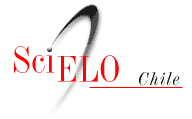Elements to Understand the Clustering of Foreign Students in Chilean Schools
DOI:
https://doi.org/10.4067/S0718-73782020000100087Keywords:
Public schools; School segregation; Choice of school; International migration; ChileAbstract
Migration to Chile has incremented significantly during the last few years, which has an impact on the quantity of foreign students registered in the school system. These kind of students, unlike the Chilean ones, mainly attend public schools. However, it is established that the percentage of foreign students that go to this type of school also varies even when they are in the same area. Moreover, only some schools concentrate foreign students. This is usually explained by the fact that public schools are free of charge and there are few barriers to control the admission and, also, because of the migrant population residential pattern. The concentration of foreign students is relevant to Chilean school system because it represents a new form of segregation in a system already fragmented in a socioeconomic and academic level. This article presents the results of an ethnographic study developed in two nearby public schools. Both show a variation of foreign student percentages. The results show that families play a vital role because they tend to self-segregate themselves to protect their children from discriminatory situations related to their migrant condition
Published
How to Cite
Issue
Section
License

This work is licensed under a Creative Commons Attribution 4.0 International License.
Creative Commons Attribution (by)
This licence permits the exploitation of the work, as well as the creation of derivative works, the distribution of which is also permitted on condition that express reference is made to the author, i.e. that his/her name appears in any use or act of exploitation of the work.













